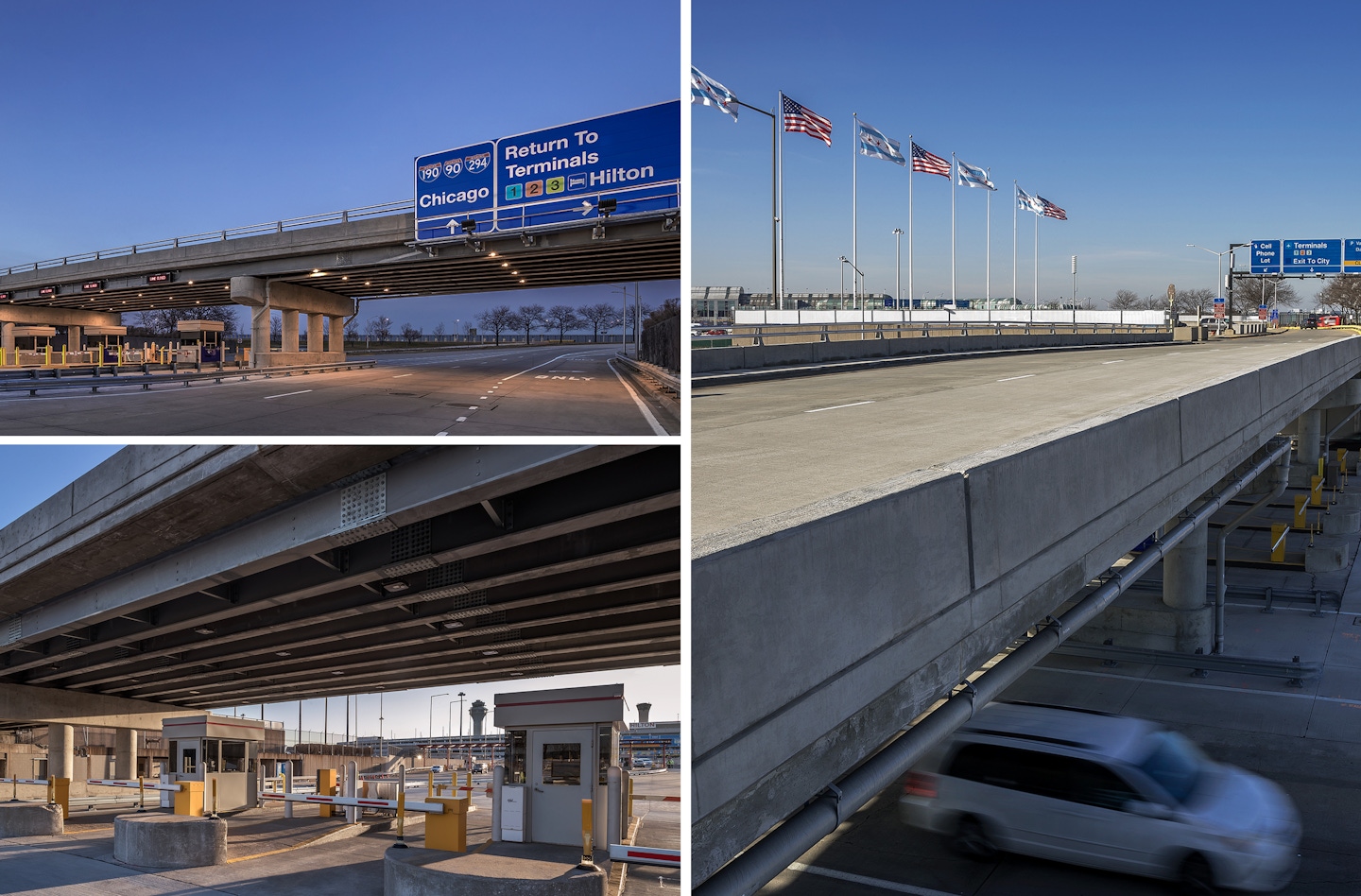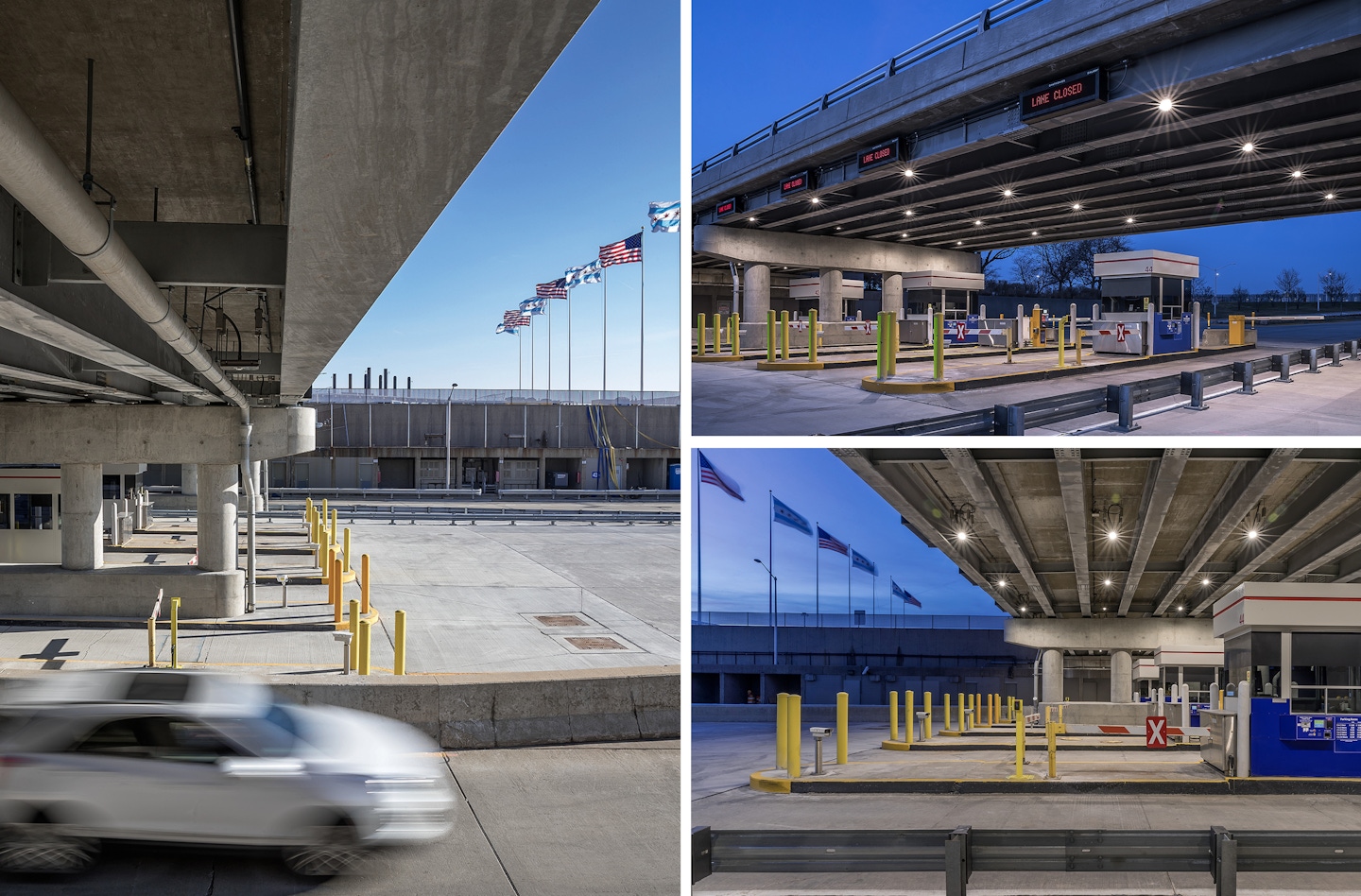Epstein is pleased to have provided structural and civil engineering services for a Phase II bridge rehabilitation that spans over several roadway entrances at Chicago’s O’Hare International Airport. These areas included the elevated parking structure (EPS), the Hilton parking structure, and surface lots B and C. The bridge provides a continuous circulation access to the lower and upper roadways of Terminals 1, 2, and 3. It’s also connected to two loop ramps that provide circulation access to the EPS entrance as well as recirculation at the EPS exit back to the Terminals.
Based on the original condition of the existing bridge, a full replacement of the existing deck, superstructure, and substructure with a reuse of the existing abutment end supports was recommended. Epstein was selected and awarded this project through our current Chicago Department of Aviation Task Order Service Request contract.
The previous bridge was deteriorated to the point that shoring towers were permanently in place. Parking toll booths #40 and #41, located on the sides of Pier #103, were closed due to the placement of temporary shoring. Between Pier #102 and the east abutment, there was closure to one of three exit access lanes just to the east of the pier, also for the placement of temporary shoring. With a new superstructure and piers, the shoring towers were able to be removed and the intended traffic patterns and vehicle flow were able to be restored.
After confirming the recommendations for the renovation, Epstein developed plans for the rehabilitation including the replacement of the existing superstructure and several substructure components. Only the shallow pier foundations and closed abutments remained. The new Epstein-engineered structure is a 215-feet-long, three-span reinforced concrete cast-in-place deck on continuous steel wide flange beams supported by original closed abutments and two proposed multi-column piers. The structure is 50 feet wide, transversely across the deck. By going from pre-stressed precast concrete beams to a continuous steel wide flange superstructure, four transverse expansion joints in the bridge deck were eliminated, reducing future maintenance costs. The new members are shallower, therefore improving the structure vertical clearance.
Furthermore, due to the location of the bridge, one of the most challenging aspects of this project was how to stage the construction while minimizing traffic impacts at the terminals and to the parking facility – all while maintaining a safe working environment for the contractor. The maintenance of traffic (MOT) plan allowed for an uninhibited entrance to the EPS, operation of the tolling booths, exit from the EPS, tolling through the toll booths under the bridge and operation of the preceding toll booths south of the bridge, and 24-hour fire truck access from ARFF #3 Building over the recirculation bridge.
Besides the roadway and bridge design, Epstein also provided lighting design and electrical engineering services for the parking booths, variable message boards, and roadway signage attached to the structure. The electrical feeds providing power to the parking booths as well as the existing lighting on and around the bridge were carefully evaluated to ensure that the power, lighting, and communications were maintained and coordinated with the MOT plan. Existing underground duct banks had to be removed as they conflicted with the new proposed piers. New underground duct banks were designed to eliminate these conflicts and coordinated with the new piers and new parking booths/revenue collection equipment. The installation of these new duct banks was carefully planned to coordinate with the various construction stages of the project.
(Joe Romano, PE, Epstein's former Chief Electrical Engineer, helped contribute to this piece.)




